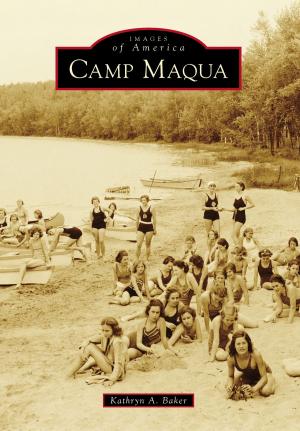| Author: | Randall Hazelbaker | ISBN: | 9781439648995 |
| Publisher: | Arcadia Publishing Inc. | Publication: | December 15, 2014 |
| Imprint: | Arcadia Publishing | Language: | English |
| Author: | Randall Hazelbaker |
| ISBN: | 9781439648995 |
| Publisher: | Arcadia Publishing Inc. |
| Publication: | December 15, 2014 |
| Imprint: | Arcadia Publishing |
| Language: | English |
In 1831, Rev. Allen Tibbits and Joseph Hanchett arrived in the area that would become Coldwater. Together, they platted out a village and named it Lyons after their hometown in New York. Potawatomi Indians called the area �chuck-sey-ya-bish,� which translated to �cold water,� and within two years the settlers followed the Indians� example in naming the village. Many pioneers traveled on the Historic Sauk Trail (now US Route 12), which connects Detroit to Chicago, putting Coldwater on the map. The introduction of the Erie Canal in 1825�and railroad transit in 1850�revolutionized travel and spawned rapid growth. By 1861, Coldwater was recognized as a city. As a result of this growth, cottages at Coldwater Lake started showing up in the late 1870s as �summer getaways,� enticing tourists to the area. In addition, cultural outlets like the Tibbits Opera House, built in 1882 and boasting Second Empire architecture, graced the downtown area.
In 1831, Rev. Allen Tibbits and Joseph Hanchett arrived in the area that would become Coldwater. Together, they platted out a village and named it Lyons after their hometown in New York. Potawatomi Indians called the area �chuck-sey-ya-bish,� which translated to �cold water,� and within two years the settlers followed the Indians� example in naming the village. Many pioneers traveled on the Historic Sauk Trail (now US Route 12), which connects Detroit to Chicago, putting Coldwater on the map. The introduction of the Erie Canal in 1825�and railroad transit in 1850�revolutionized travel and spawned rapid growth. By 1861, Coldwater was recognized as a city. As a result of this growth, cottages at Coldwater Lake started showing up in the late 1870s as �summer getaways,� enticing tourists to the area. In addition, cultural outlets like the Tibbits Opera House, built in 1882 and boasting Second Empire architecture, graced the downtown area.















